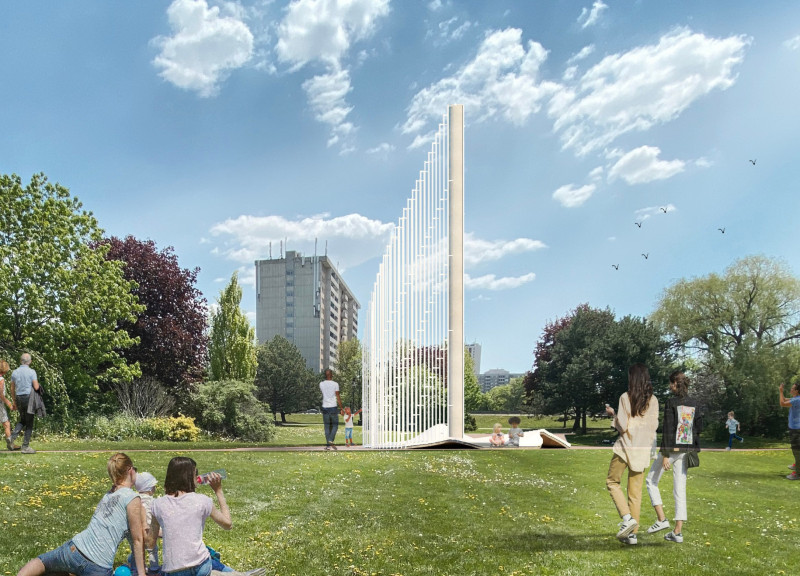5 key facts about this project
The Last Genocide Memorial serves as an architectural response to the pressing need for remembrance and education regarding the atrocities of genocide. Situated in a thoughtful location conducive to reflection, this project provides a solemn space for visitors to honor victims while fostering awareness about ongoing issues related to human rights. The design integrates both functionality and symbolism, creating an environment that invites contemplation and dialogue.
One of the central features of the memorial is its tall, tapering structure, which resembles a stylized flower, symbolizing resilience and commemoration. This architectural form not only draws attention but also guides visitors through a sensory experience on their journey of reflection. The use of materials such as concrete, white brick pavers, LED light strips, and steel reinforces the structure's permanence and significance. Each element has been carefully selected not just for its aesthetic qualities, but also for its ability to convey deeper meanings related to memory and loss. The combination of solid and translucent components allows light to permeate the space, representing illumination on historical narratives that may have been obscured.
The layout and spatial configuration of the memorial enhance its unique character. A heart-like seating area encourages communal gathering, fostering a dialogue about the past. Additionally, the memorial's narrative lattice structure creates a dynamic interaction with light and shadow, offering an evolving visual experience that varies with the time of day. This feature emphasizes the past's complexity and the continuing relevance of history, making the space not only a site for remembrance but also an educational platform for future generations.
Architectural plans and sections reveal the meticulous thought that has gone into each design choice. The thoughtful integration of LED lighting within the structure ensures that the memorial remains visible and engaging during different times, contributing to a profound user experience. The approach taken in this project reflects an understanding of how architectural design can serve community needs by blending education, memory, and aesthetics effectively.
By exploring the architectural plans, sections, and distinct design ideas, readers can gain a more comprehensive understanding of the Last Genocide Memorial's significance. The memorial's thoughtful design touches on both emotional and practical aspects, ensuring it stands as a meaningful contribution to the discourse surrounding human rights and remembrance in contemporary society. For a deeper insight into the project’s intricate details, the exploration of its architectural elements is encouraged.






















































